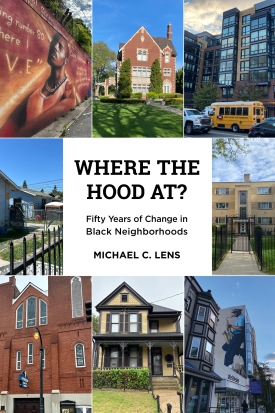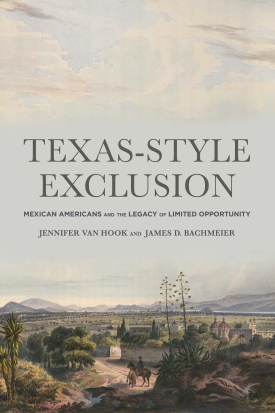
Where the Hood At?
About This Book
“Michael Lens provides an unprecedented systematic overview of economic and social conditions in Black neighborhoods for the past half century. By moving beyond the pathos narrative that has characterized much of the scholarship on Black neighborhoods, Where the Hood At? will help us to understand the Black neighborhood in all its complexity and diversity. Where the Hood At? is a must-read for students of neighborhoods, urban planners and policymakers, and the Black experience.”
—LANCE FREEMAN, James W. Effron University Professor of City and Regional Planning and Sociology, University of Pennsylvania
“Where the Hood At? describes in impressively comprehensive terms how Black neighborhoods in America have evolved over the last half century. Rigorous statistical documentation is clothed with an accessible writing style. This is a welcome study addressing a critical gap in scholarship related to racial segregation, neighborhood effects, and ethnographies of place. It reminds us why Black neighborhoods, not just individuals, are an important locus for analyzing issues of racial equity.”
—GEORGE C. GALSTER, Clarence Hilberry Professor of Urban Affairs and Distinguished Professor, emeritus, Department of Urban Studies and Planning, Wayne State University
“Michael Lens has produced a comprehensive profile that describes the trajectory of the Black neighborhood in American cities over five decades. It is a much-needed and authoritative addition to our understanding of the Black neighborhood in American cities. Lens’s work provides ample fodder for policy debates ranging from integration and gentrification to the relative importance of place-based policymaking. We will be relying on Lens’s analysis of the Black neighborhood for a long time to come. Where the Hood At? challenges our assumptions about Black neighborhoods in American cities and their paths over the past fifty years. Just as importantly, the comprehensiveness of Lens’s analysis provides a clear and robust foundation for thinking about the future of these neighborhoods.”
—EDWARD GOETZ, professor and director, Center for Urban and Regional Affairs, Humphrey School of Public Affairs, University of Minnesota
Substantial gaps exist between Black Americans and other racial and ethnic groups in the U.S., most glaringly Whites, across virtually all quality-of-life indicators. Despite strong evidence that neighborhood residence affects life outcomes, we lack a comprehensive picture of Black neighborhood conditions and how they have changed over time. In Where the Hood At? urban planning and public policy scholar Michael C. Lens examines the characteristics and trajectories of Black neighborhoods across the U.S. over the fifty years since the Fair Housing Act.
Hip hop music was born out of Black neighborhoods in the 1970s and has evolved alongside them. In Where the Hood At? Lens uses rap’s growth and influence across the country to frame discussions about the development and conditions of Black neighborhoods. Lens finds that social and economic improvement in Black neighborhoods since the 1970s has been slow. However, how well Black neighborhoods are doing varies substantially by region. Overall, Black neighborhoods in the South are doing well and growing quickly. Black neighborhoods in the Midwest and the Rust Belt, on the other hand, are particularly disadvantaged. The welfare of Black neighborhoods is related not only to factors within neighborhoods, such as the unemployment rate, but also to characteristics of the larger metropolitan area, such as overall income inequality. Lens finds that while gentrification is increasingly prevalent, it is growing slowly, and is not
as pressing an issue as public discourse would make it seem. Instead, concentrated disadvantage is by far the most common and pressing problem in Black neighborhoods.
Lens argues that Black neighborhoods represent urban America’s greatest policy failures, and that recent housing policies have only had mild success. He provides several suggestions for policies with the goalof uplifting Black neighborhoods. One radical proposal is enacting policies and programs, such as tax breaks for entrepreneurs or other small business owners, that would encourage Black Americans to move backto the South. Black Americans migrating South would have a better chance at moving to an advantaged Black neighborhood as improving neighborhood location is higher when moving across regions. It would also help Black Americans expand their political and economic power. He also suggests a regional focus for economic development policies, particularly in the Midwest where Black neighborhoods are struggling the most. He also calls for building more affordable housing in Black suburbs. Black poverty is lower in suburbs than in central cities, so increasing housing in Black suburbs would allow Black households to relocate to more advantaged neighborhoods, which research has shown leads to improved life outcomes.
Where the Hood At? is a remarkable and comprehensive account of Black neighborhoods that helps us to better understand the places and conditions that allow them flourish or impedes their advancement.
MICHAEL C. LENS is a professor in the Luskin School of Public Affairs, departments of urban planning and public policy, University of California, Los Angeles.

